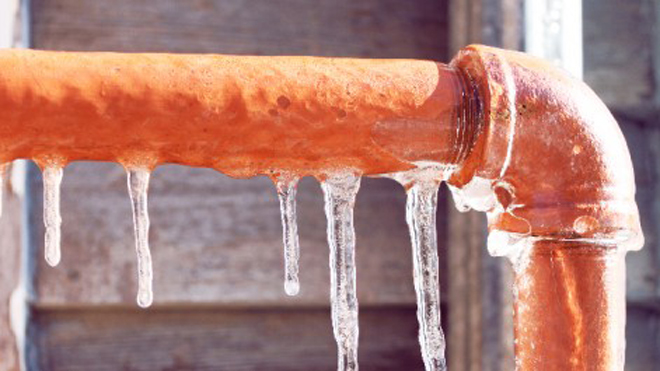Protecting Your Pipes from Freezing: Best Tips
Protecting Your Pipes from Freezing: Best Tips
Blog Article
Nearly everybody maintains their own thinking about How To Avoid Freezing Pipes.

Winter can wreak havoc on your pipes, especially by freezing pipelines. Right here's just how to prevent it from taking place and what to do if it does.
Intro
As temperature levels decline, the danger of frozen pipes increases, potentially leading to pricey fixings and water damages. Comprehending how to stop icy pipes is important for property owners in cool environments.
Prevention Tips
Shielding prone pipelines
Wrap pipelines in insulation sleeves or utilize warm tape to protect them from freezing temperatures. Concentrate on pipelines in unheated or exterior locations of the home.
Home heating strategies
Keep indoor spaces appropriately warmed, particularly areas with plumbing. Open up cupboard doors to allow warm air to flow around pipes under sinks.
Exactly how to determine icy pipes
Look for lowered water flow from faucets, unusual odors or noises from pipelines, and visible frost on exposed pipelines.
Long-Term Solutions
Architectural modifications
Consider rerouting pipes far from outside wall surfaces or unheated areas. Add extra insulation to attic rooms, cellars, and crawl spaces.
Upgrading insulation
Purchase top quality insulation for pipes, attic rooms, and walls. Correct insulation aids preserve regular temperature levels and minimizes the danger of icy pipelines.
Protecting Outside Plumbing
Yard hoses and outside taps
Disconnect and drain pipes yard hose pipes prior to winter. Set up frost-proof faucets or cover exterior faucets with shielded caps.
Recognizing Frozen Pipes
What creates pipelines to freeze?
Pipes ice up when exposed to temperature levels listed below 32 ° F (0 ° C) for prolonged durations. As water inside the pipes ices up, it increases, putting pressure on the pipe wall surfaces and potentially creating them to break.
Dangers and damages
Frozen pipes can bring about water system disturbances, building damage, and costly fixings. Burst pipelines can flooding homes and create considerable architectural damage.
Signs of Frozen Pipes
Recognizing icy pipes early can stop them from bursting.
What to Do If Your Pipes Freeze
Immediate actions to take
If you think icy pipelines, keep taps available to ease pressure as the ice thaws. Use a hairdryer or towels taken in hot water to thaw pipelines slowly.
Verdict
Stopping frozen pipelines requires aggressive steps and fast feedbacks. By comprehending the reasons, signs, and preventive measures, home owners can safeguard their pipes throughout winter.
5 Ways to Prevent Frozen Pipes
Drain Outdoor Faucets and Disconnect Hoses
First, close the shut-off valve that controls the flow of water in the pipe to your outdoor faucet. Then, head outside to disconnect and drain your hose and open the outdoor faucet to allow the water to completely drain out of the line. Turn off the faucet when done. Finally, head back to the shut-off valve and drain the remaining water inside the pipe into a bucket or container. Additionally, if you have a home irrigation system, you should consider hiring an expert to clear the system of water each year.
Insulate Pipes
One of the best and most cost-effective methods for preventing frozen water pipes is to wrap your pipes with insulation. This is especially important for areas in your home that aren’t exposed to heat, such as an attic. We suggest using foam sleeves, which can typically be found at your local hardware store.
Keep Heat Running at 65
Your pipes are located inside your walls, and the temperature there is much colder than the rest of the house. To prevent your pipes from freezing, The Insurance Information Institute suggests that you keep your home heated to at least 65 degrees, even when traveling. You may want to invest in smart devices that can keep an eye on the temperature in your home while you’re away.
Leave Water Dripping
Moving water — even a small trickle — can prevent ice from forming inside your pipes. When freezing temps are imminent, start a drip of water from all faucets that serve exposed pipes. Leaving a few faucets running will also help relieve pressure inside the pipes and help prevent a rupture if the water inside freezes.
Open Cupboard Doors
Warm your kitchen and bathroom pipes by opening cupboards and vanities. You should also leave your interior doors ajar to help warm air circulate evenly throughout your home.

As a reader on Prevent Frozen Pipes , I imagined sharing that excerpt was beneficial. Do you know somebody else who is in to the subject? Why not share it. Thanks a lot for your time. Please visit our website back soon.
Phone Report this page